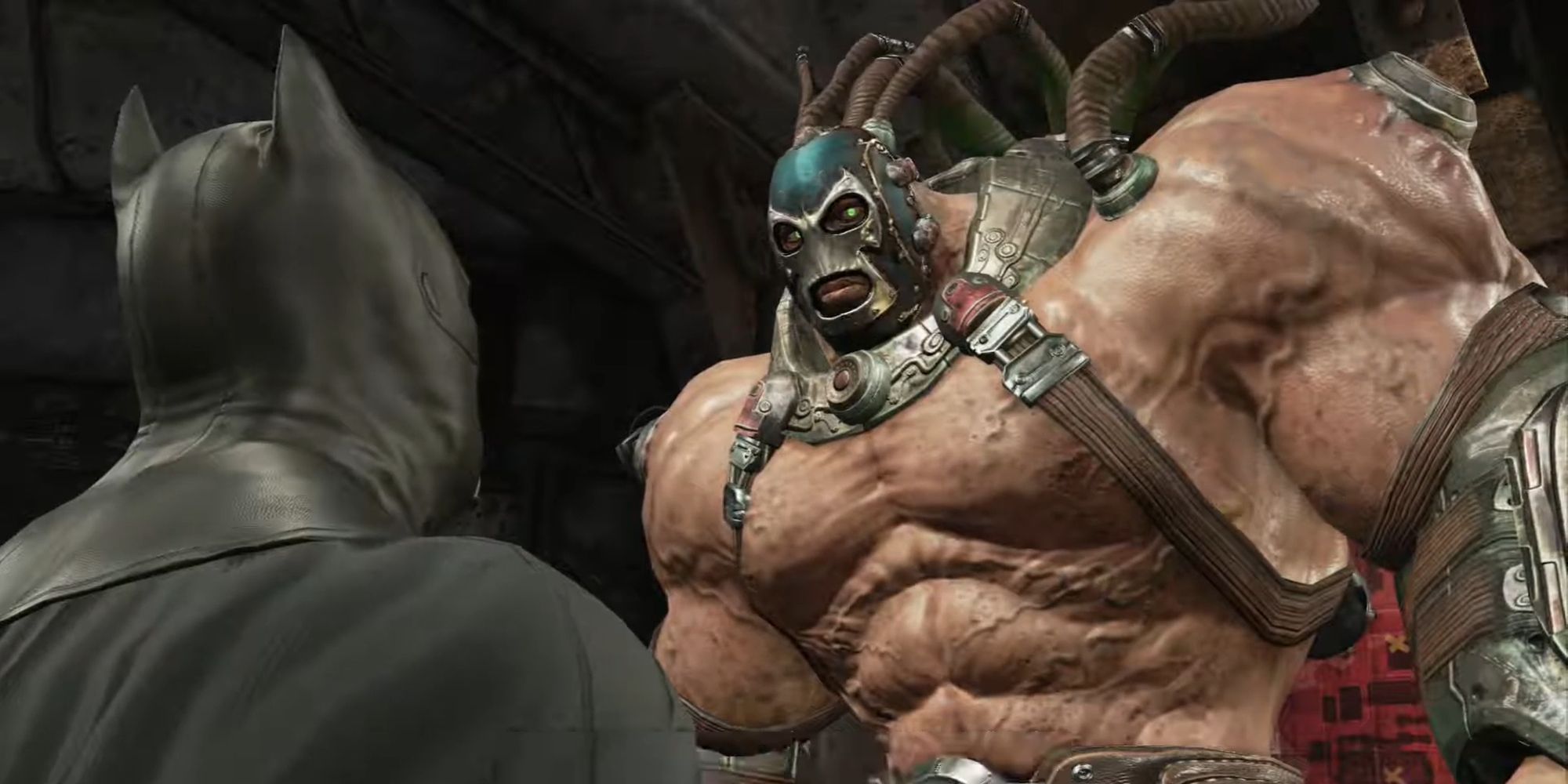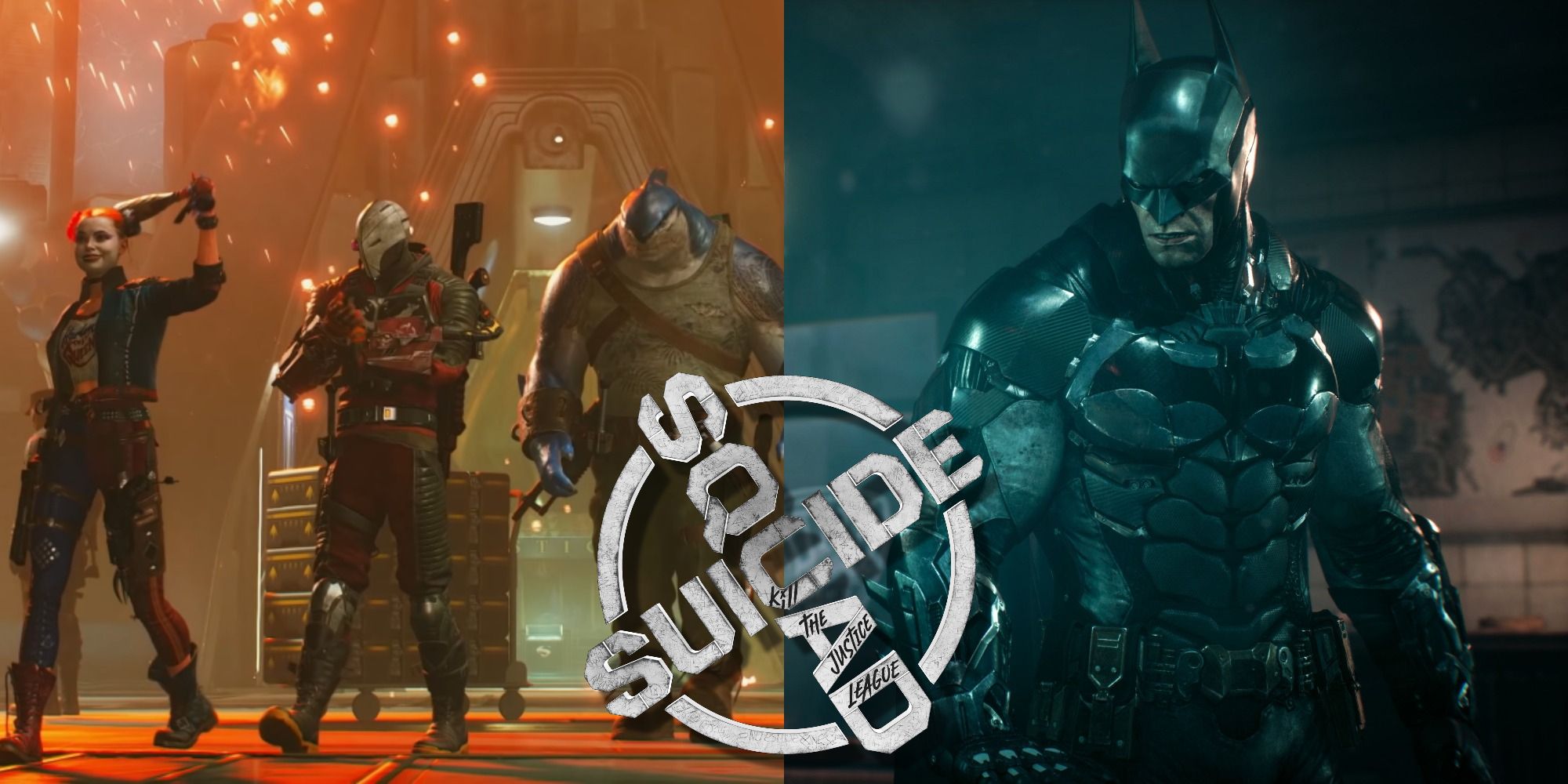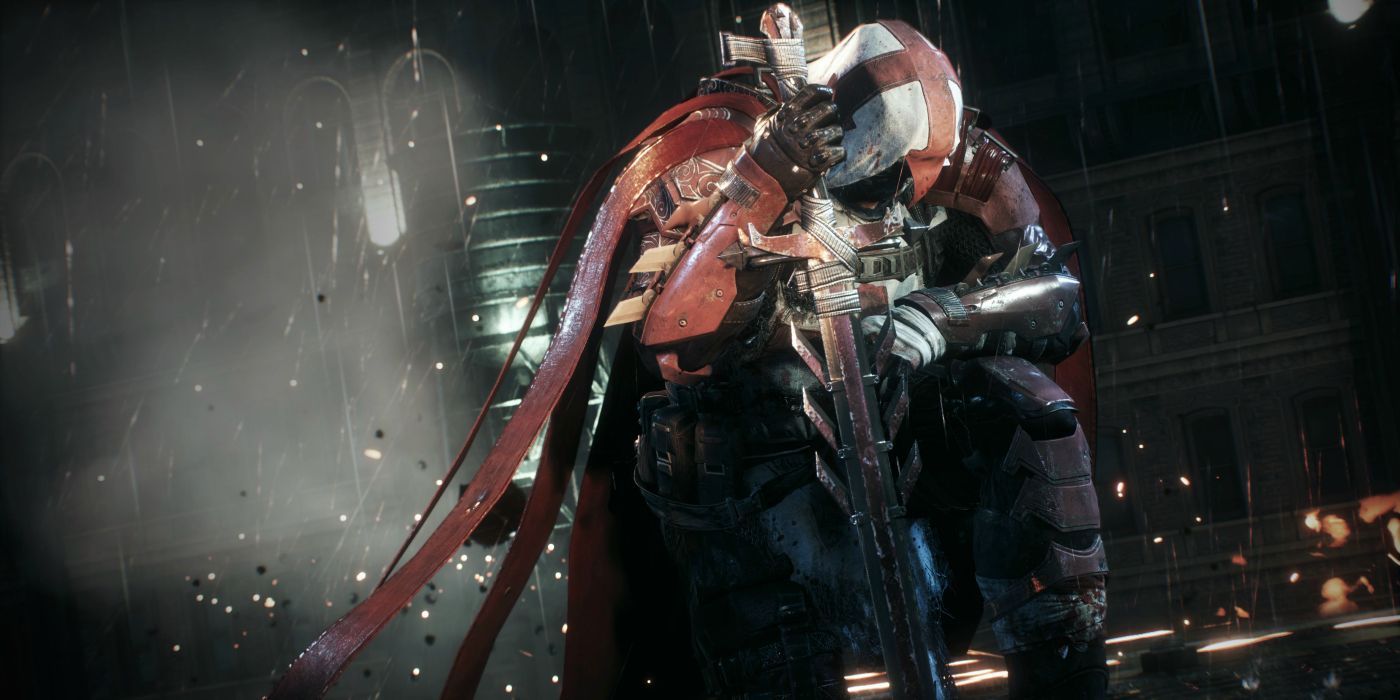Suicide Squad: Kill the Justice League is the canonical sequel to the Batman: Arkham series, meaning the co-op shooter could answer some unresolved questions from the last series. The Batman: Arkham series took the gaming industry by storm, swiftly becoming one of the most popular superhero game series in the modern age. As the games expanded to an open-world format and introduced dozens of new characters, Batman underwent numerous adventures and storylines throughout Gotham City. Unfortunately, many of these characters didn’t receive the concentrated development they did in comic books, television shows, or movies, and WB Games placed many more on the backburners. Easter Eggs and hidden dialogue filled some gaps, but Suicide Squad: Kill the Justice League‘s story could resolve many unanswered questions.
The Suicide Squad: Kill the Justice League game takes place in Metropolis and the activities of the larger superhero community. Brainiac, an extraterrestrial villain responsible for Krypton’s destruction (in some universes), attacks Metropolis and appears to take control of the Justice League’s minds. After a traditional military response fails, Amanda Waller mobilizes Task Force X (aka the Suicide Squad) to eliminate Brainiac’s most powerful targets, including Superman, Flash, and Green Lantern. Players can choose one of four characters to play: Harley Quinn, Deadshot, King Shark, and Captain Boomerang. While the first two characters appeared in the Batman: Arkham series, King Shark and Captain Boomerang are experiencing their DC video game debuts in the upcoming title. However, the inclusion of two Gotham-based supervillains could bode well for several resolved plotlines.
The Batman: Arkham series ended with Arkham Knight in 2015. Despite positive reviews, smooth gameplay, and a fitting conclusion for the Dark Knight’s virtual storyline, Rocksteady failed to wrap up every loose end. While some of these neglected characters or storylines likely focused on future plans for the franchise, others seemed to disappear without much explanation. In comics, it’s common for side characters or villains to disappear for lengthy periods while they plot, heal, or remain imprisoned. However, while Batman’s story in Rocksteady’s DC universe appears to have ended, his villains, sidekicks, and allies should still make appearances to conclude different storylines or enhance the gameplay experience. Suicide Squad: Kill the Justice League should expand on the fates of forgotten characters, address Batman’s current status, and mention Gotham City’s past events.
Suicide Squad Should Include Bane After Batman: Arkham City

Batman: Arkham City and Batman: Arkham Origins both featured appearances from Bane, a drug lord and one of Batman’s most dangerous villains. Unlike other characters in Gotham City, Bane’s relationship with the Dark Knight is a competition of willpower, brute strength, and an attempt to claim inner peace. His motivation to destroy Batman changes between different DC continuities, but in the Batman: Arkham series, Bane’s torment in the Santa Prisca prison created nightmares of a demon bat. Believing these nightmares stemmed from Batman’s existence in Gotham, Bane sought to kill the Dark Knight, finally freeing himself from his traumatic past. Unfortunately for the seasoned warrior, Bane’s mission failed and resulted in a painful corruption from Joker’s Titan chemical alongside a swift expulsion from Gotham City. However, a Batman: Arkham Knight Easter Egg reveals someone stored Bane’s equipment near Gotham’s Docks, hinting at the warrior’s survival and return.
Batman: Arkham Knight’s missions do their best to resolve the series’ many plots and character arcs, but the final product couldn’t feature a return for all its characters. Some had perished in previous titles, while others remained in Arkham Asylum or other prisons in the DC universe. However, several other bounty hunters from Batman: Arkham Origins appeared in Arkham Knight, including Firefly and Deathstroke. Given Bane’s important role in previous Batman: Arkham games, and his occasional appearance with the Suicide Squad in the comics, this terrifying fighter could be the perfect addition to the campaign. While the Suicide Squad’s primary target is Brainiac’s controlled Justice League, featuring Bane as an ally (or enemy) in wartorn Metropolis. His inclusion could fill some unresolved plotlines and enhance Suicide Squad: Kill the Justice League‘s story.
Suicide Squad Needs To Address Where Batman Is

While Gotham Knights centers around Batman’s death and the events afterward, Batman: Arkham Knight leaves Bruce Wayne’s story somewhat ambiguous. Suicide Squad: Kill the Justice League should clarify this situation to avoid dragging the Dark Knight’s story on. As many players know, Wayne Manor exploded after Batman defeated Scarecrow, the Arkham Knight, and reclaimed Gotham City. While many Gotham citizens believed that Bruce Wayne and Batman both died in the explosion, a post-credits scene showed a monstrous bat-like creature attacking muggers. Unfortunately, it’s unknown if the creature is Bruce Wayne returning to his vigilante roots or one of his sidekicks taking up the Batman mantle. Batman’s Knightfall Protocol is also somewhat confusing, bringing into question why Bruce Wayne pushed away his associates if he intended to continue his vigilante career. Thankfully, Suicide Squad: Kill the Justice League could clear up some discrepancies and answer forgotten questions.
Suicide Squad‘s Harley Quinn appeared in Batman: Arkham as a regular villain, but after Joker died, she spiraled into a depressive, obsessive state concerning the subjects infected by his blood. Her presence throughout the Batman: Arkham series influenced Batman heavily, and she maintained a prominent role in many serious conflicts. Additionally, a sharpshooter called Deadshot also appeared, though tweets from Rocksteady confirmed the identity’s previous owner wasn’t the real Deadshot. However, since two of the four playable characters in Suicide Squad have connections to Gotham in their villainous personas, it’d be negligent to avoid mentioning Batman’s existence and current status.
Suicide Squad: Kill The Justice League Could Complete Azrael’s Story

Batman: Arkham’s story missions featured Azrael, a mind-controlled member of the Order of Saint Dumas, who believed divine intervention ensured his destiny as Gotham’s next protector. Players controlled Azrael through several trials, completing different combat simulations with varying stipulations for success. However, it swiftly becomes apparent that Azrael is being used by his Order to kill Batman and conquer Gotham with a relentless form of unyielding, violent justice. At the conclusion of Azrael’s quest, players can choose to kill Batman or rebel against the Order and forge their own path. It’s unknown which choice is canonical, but Rocksteady could confirm this by inserting a reference to Azrael’s vigilante career (or his criminal career, depending on players’ options).
While Suicide Squad: Kill the Justice League and Batman: Arkham feature many differences in core gameplay mechanics, their connected universe and continuity enable Rocksteady to include character cameos and continue different stories. Unfortunately, fans have a significant wait before Suicide Squad: Kill the Justice League releases, with the co-op shooter having recently suffered a delay to next year. Hopefully, this delay can enable developers to include more continuity between the game series and polish various graphics, characters, and gameplay mechanics before release. Suicide Squad: Kill the Justice League has no release date, but is scheduled for a 2023 launch.




